Louis 'Skip' Sander
Radio
When he was twelve or thirteen years old, Lou developed an interest in shortwave radio. This interest led to activites as a short wave listener (SWL) and an amateur radio operator (or "ham"), and to a degree in electrical engineering. His equipment interests are covered on the Electronics Projects page. The present page covers Lou's listening, operating, and the like, from the mid-1940s to today.
Seeds
Lou remembers listening to the radio at a very early age. He was five years old when Franklin D. Roosevelt died, and he's pretty sure he heard about it on the radio. He's very sure he was listening to the radio when he heard about VE day or VJ day. About that time, he had a neighbor, Mr. Balch or Baulch, who was a licensed ham. He doesn't remember anything about him but that fact, and he remembers that only because his parents reminded him of it many years later.
Growing up in the 1940s and 1950s, Lou, like most kids, had his favorite radio programs. He remembers listening to the Lone Ranger, Hop Harrigan, Sergeant Preston of the Yukon, Sky King, Inner Sanctum, Superman, Let's Pretend, and many more.
When the family moved to a newly-built hilltop home in 1948, there were AM radio broadcasting towers on two adjacent hilltops. One of them, for KQV, with five towers, was in place when he moved in. The other, for WWSW, with seven, was built shortly thereafter. Their signals were so strong that they could be received on simple crystal sets, and even occasionally on people's stoves.
Short Wave Listener
Lou first listened to short wave on his family's Philco 610 radio, which was identical to the unit pictured below:
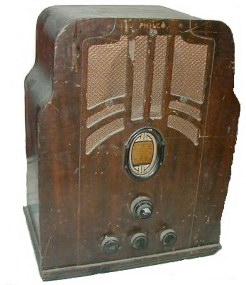 |
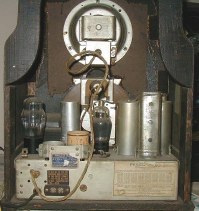 |
Philco 610, made about 1935
|
Rear View of the Philco 610
|
In pre-television days, this had been the family's entertainment center. Somewhere in the early 1950s, it moved up into Lou's bedroom and became his personal radio. The Philco covered several shortwave bands, and if you connected it to a wire antenna, you could hear a surprising number of shortwave stations.
Lou was fascinated by the short wave broadcast stations he could hear, and by the ham radio operators (then using AM, and therefore intelligible on a simple receiver) who were able to converse with each other across hundreds or thousands of miles. This was in the days when making a long distance telephone call was a major undertaking, involving lots of money and one or more long distance operators.
Listening to the Philco led Lou to build his first receiver, which was better than the Philco on the ham bands, but didn't cover any short wave broadcast bands.
When he was in junior high or high school, Lou bought a Hallicrafters SX-28A, which had been one of the premiere receivers in the immediate postwar period. It wasn't a modern radio at the time, but it was a pretty good second choice. Here's what the SX-28A looked like:
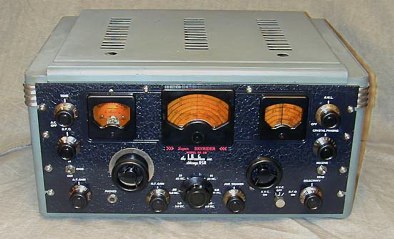
Hallicrafters SX-28A Super Skyrider
While learning Morse code and studying for his ham license, Lou pursued short wave listening on the SX-28A. Boys' Life, the official magazine of the Boy Scouts of America, had a short wave column in those days, and offered awards for logging stations in various geographical areas, as well as awards for listening confirmed by QSL cards for the stations involved. Lou won every possible Boys' Life award, including those for confirmed reception of stations in all 48 states (Alaska and Hawaii had not yet been admitted to the union).
Probably his highest award was the World Listener certificate, for confirmed reception from 25 different countries on all six continents, pictured below:
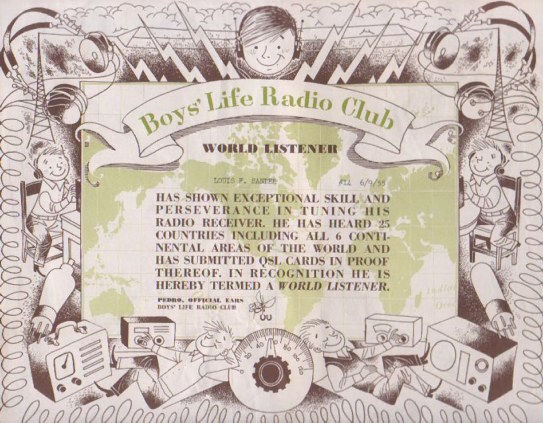
In March, 1955, at age 15, Lou earned his FCC license as an amateur radio operator, with callsign WN3BOA. This marked the end of his short wave listening, and the beginning of a ten-year period of amateur radio operation.
Lou had a recent encounter with short wave listening, when he bought a Radio Shack DX-399 in September, 2002. A few nights with the radio and Passport to World Band Radio, the SWL equivalent to TV Guide, and Lou was hooked again. He had a ball listening to short wave broadcast stations, and even to a few ham operators, and he bought a second, more upscale, radio, a Radio Shack DX-398. (The DX-399 is a rebranded Sangean ATS-606, and the DX-398 is a rebranded Sangean ATS-909.)
Some of the same stations are still on the air as in the 1950s, though some of their names and even their countries have changed. The BBC is still around, as are Radio Moscow (now called Voice of Russia), Radio Ankara Turkey (now Voice of Turkey), and HCJB, the Voice of the Andes.
New entities, here because of progress and the change in the global political scene, include Deutsche Welle, Radio Taipei International, China Radio International, and many stations from the Arab world. Broadcasts in English and Spanish are as common as they were in the 1950s, and we now also have many in Arabic, Chinese, German, and Japanese. These latter were rare or totally absent back in Lou's "old days." WWV, WWVH, and CHU are still ticking out their super-accurate time signals. (Since Lou first heard it, WWV has send out over 1.5 billion ticks, every one of them flawlessly accurate!)
The new radios are truly amazing. The entire DX-399 is smaller than the power transformer on the old Philco or SX-28A, and is more sensitive and selective than either of them. Electronics has REALLY advanced in fifty or sixty years. Here's what Lou's new radios look likeŚcompare the one-kHz digital readout of the DX-398 in SSB mode to the one mHz-per-inch analog dial of the Philco (and with analog dials, we were never sure what frequency we were listening to):
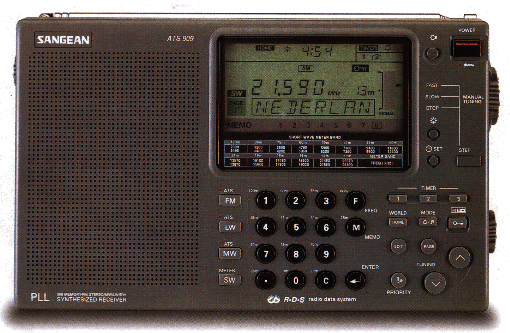 |
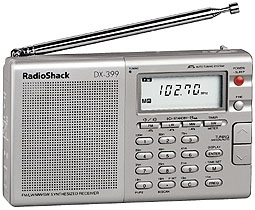 |
The Radio Shack DX-398 (also known as Sangean ATS-909) - About 9" Wide
|
The Radio Shack DX-399 - Less Than 6" Wide
|
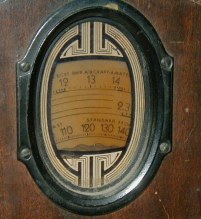 |
|
The Dial of the Philco 610
|
|
Licensed Amateur Radio Operator
Short wave listening led young Lou to an interest in amateur radio. (Hey, if you're going to listen to this stuff, you probably want to be part of it yourself!) To get an amateur license from the Federal Communications Commission, you have to pass several tests, which in those days included a proficiency test in sending and receiving Morse code, and a written test on electronics, FCC regulations, and similar matters.
Along with his friends Alan Fuller and Mickey Finn, Lou set out to learn the code, the electronics, and all the other material. Lou passed his tests on the first attempt, and in March, 1955, he was licensed as WN3BOA. This began a ten-year period of very active involvement as an amateur radio operator.
Using the SX-28A and a Johnson Viking Adventurer transmitter, Lou worked the world from his parents' home in Pittsburgh. His first contact was with Alan Fuller, WN3APR, on March 4. His first DX contact was with I1ZFD in Milan, Italy. Here are the QSL cards from those contacts:
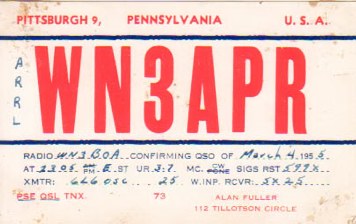 |
Lou's first Amateur Contact
|
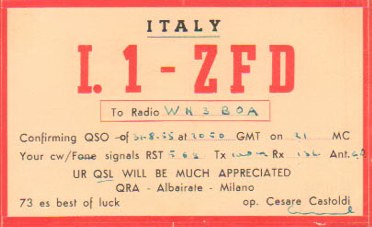 |
Lou's first Confirmed DX
|
Less than a year after being licensed, Lou passed the test for a higher class of FCC license, and became W3BOA. By mowing lawns in the summer, he earned the money ($169.95, as he remembers it) to buy a Heathkit DX-100 transmitter kit. When he finished building the kit, W3BOA went on the air with a much more powerful signal.
From late 1957 to mid-1961, Lou studied electrical engineering at Duke University, where he spent many hours on the air at W4AHY, the amateur station of the Engineers' Radio Association. As a sophomore, Lou became president of the Association, a post he also held as a junior and senior. During his time as president, he revitalized the club, leading it to higher levels of activity and success than it had ever experienced before. As chief operator, Lou earned many awards for the club, including Worked All States (WAS) and DX Century Club (DXCC).
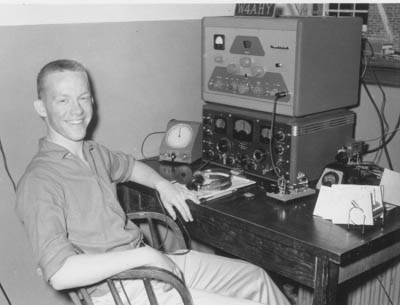 |
Lou after the 1957 Sweepstakes
|
Ham radio has frequent operating contests, where the challenge is to contact as many other stations as possible in a short period, usually a weekend or so. Most summers in high school and at Duke, Lou participated with friends in Field Day, which is a simulated emergency communications test. Stations are set up in the field, powered by emergency generators, and operations continue over night. Lou also worked DX contests and in the annual ARRL Sweepstakes, where the objective is to contact as many stations in as many states and provinces as possible. During his first year at Duke, he led W4AHY to the highest Sweepstakes score of any station in North Carolina. Lou worked over 600 stations, and had at least one contact in every one of the 73 ARRL sections, scoring over 113,000 points. The Worked All Sections accomplishment was achieved by only about a dozen U.S. and Canadian stations that year, out of the thousands who participated in the Sweepstakes.
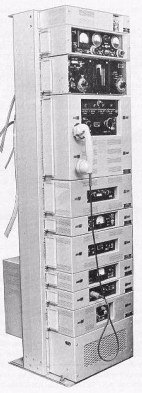 AN/URC-32
|
After graduating from Duke, Lou became Electronics Material Officer aboard the USS RANKIN (AKA-103), which made frequent trips between the East Coast and various ports in the Caribbean. After years of prohibiting amateur stations aboard ships, the Navy had recently allowed it, subject to receiving permission from the chain of command. Lou got that permission, and in 1962 began to operate W3BOA from the Rankin, primarily running "phone patches" that allowed his shipmates to talk with their friends and families back home.
On several points, operation from the Rankin was the high point of Lou's ham radio life: As EMO, he had access to the AN/URC-32, which was absolutely the most modern piece of naval communications equipment, and which lent itself beautifully to ham operation. And since he operated from aboard ship, he had a tremendous location for "getting out," with wonderful antennas, perfect grounds, and no buildings in the area to absorb the transmitted signals. Also, depending on where the ship was located, he could transmit as W3BOA Maritime Mobile, or W3BOA/KV4 (Virgin Islands), or W3BOA/KP4 (Puerto Rico). From the viewpoint of other stations, all these call signs were very attractive to "work," so Lou was frequently at the center of "DX pileups," or dozens of stations simultaneously trying to contact him. (He had, like most DX-ing hams, frequently been on the other side of pileups, as he and everybody else tried to contact one or the other piece of choice DX.)
|
Lou had "eyeball QSOs" (ham lingo for personal visits) with several hams in the Caribbean, notably Dick Spenceley, KV4AA, one of the most famous ham operators of all time. And on Puerto Rico's Vieques Island, which he passed through when leaving the Rankin for his next duty station, he had a radio contact with another famous ham: Arizona Senator and Republican presidential candidate Barry Goldwater.
Lou's ham activity diminished steadily after his time on the Rankin. He briefly had stations in Mount Prospect, Illinois and Fort Lauderdale, Florida, but he no longer had a strong interest in operating, and the demands of job and family didn't leave much time for it.
As of this writing (November, 2017), Lou is almost entirely out of amateur radio. He still retains his license as W3BOA, but he has no transmitting equipment at all, and hasn't been on the air in over 40 years. He likes to drive past a Field Day site every year, and most years he gets to one or two hamfests. A few years ago, he spent an hour or two visiting ham radio Mecca, W1AW, the station of the headquarters of the American Radio Relay League, in Newington, Connecticut.
Updated 11/12/17